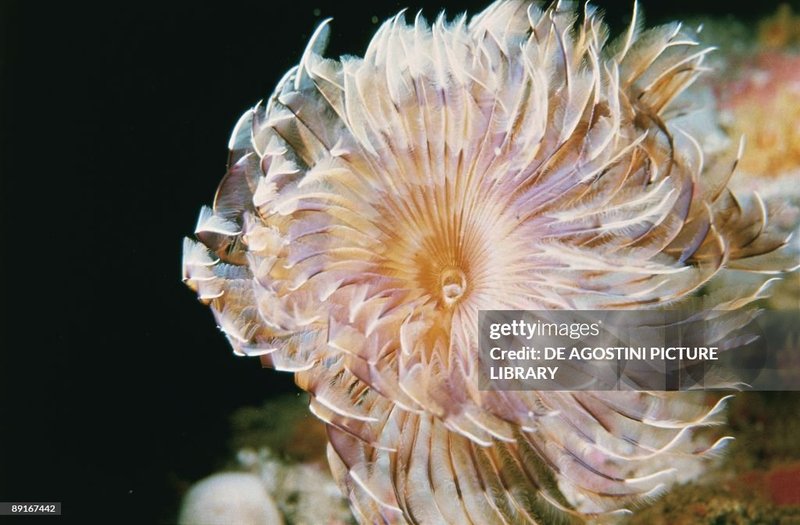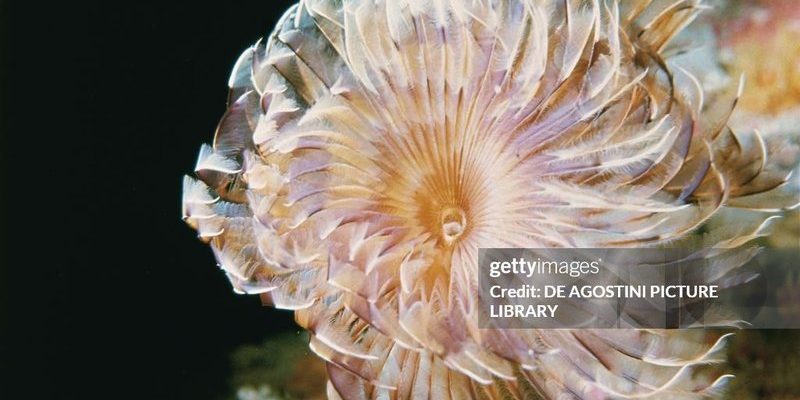
Sabellid fan worms belong to the family Sabellidae, which includes many species with beautiful, feather-like fans that they extend into the water. They can be found in various marine environments, from tidal zones to deeper waters. But what makes their feeding mechanism so special? It’s all about how they use those stunning fans to gather food efficiently. So, grab your coffee, and let’s dive into a step-by-step breakdown of how these worms eat!
What Are Sabellid Fan Worms?
Before we delve into their feeding habits, let’s understand what sabellid fan worms actually are. These creatures resemble tiny, colorful flowers waving in the ocean current. They have a tube where they live, and their fans can be quite striking, often displaying vibrant colors like bright reds, yellows, and greens. These fans are made of a series of feathery appendages called parapodia.
These parapodia not only serve to attract food but also have a sensory function, helping the worms detect changes in their environment. When the water moves, the fans catch microscopic organisms, including phytoplankton and detritus, which are essential for their diet. Think of it as fishing with a beautifully crafted net!
How Sabellid Fan Worms Feed
The feeding mechanism of sabellid fan worms is a fascinating and efficient process. When they extend their fans into the water, they create a large surface area that traps tiny food particles. Here’s how it works step-by-step:
1. Extending the Fans
First, they unfurl their fans. The fans can be quite extensive, often measuring several times the length of the worm’s body. This is similar to how you might spread out a large towel on the beach to catch the sun. The bigger the surface area, the more likely they’ll catch something.
As they extend these fans, the worms can also manipulate them to maximize their effectiveness. You might notice them adjusting the position of their fans based on the flow of the water, almost like a dancer adjusting their stance to catch the best breeze.
2. Capturing Food Particles
Next, the fans act like a filter, trapping food particles as water flows through them. These particles include small plankton, algae, and organic matter. It’s a bit like using a colander to catch pasta while letting the water drain. The fan can capture a surprising amount of food due to its intricate structure, designed perfectly for this purpose.
Interestingly, the fans have tiny mucus-covered cilia that help to further trap and transport the food particles. These cilia work like tiny brooms, sweeping food toward the worm’s mouth.
3. Transporting Food to the Mouth
After capturing the food, the next step in the sabellid worm’s feeding mechanism is transporting it to the mouth. This process is delicate and efficient. The cilia lining the fans continuously move, directing the trapped food into a small channel that leads directly to the mouth.
You can think of it like a conveyor belt in a factory, efficiently moving products along to the next stage. The combination of cilia and mucus ensures that very little food gets wasted. It’s a brilliant adaptation for survival!
4. Eating and Digestion
Once the food reaches the mouth, the actual eating begins. Sabellid fan worms have a simple digestive system. After taking in the food, it will move through their gut, where nutrients are absorbed. The waste is then expelled back into the water, completing the cycle.
This efficient feeding mechanism allows them to thrive even in environments where food may be scarce. They’ve mastered the art of catching and processing food, ensuring they get the most out of their habitat.
Environmental Role of Sabellid Fan Worms
Now that we’ve dissected their feeding method, you might wonder why these worms matter in their ecosystem. Sabellid fan worms play a vital role in marine environments. By filtering small particles from the water, they help maintain the health of their habitats.
Their feeding activities also contribute to nutrient cycling, which is crucial for the overall health of marine ecosystems. In a way, they act like nature’s little vacuum cleaners, cleaning the water while also providing a food source for various predators.
Challenges Faced by Sabellid Fan Worms
Despite their fascinating adaptations, sabellid fan worms face several challenges in their ocean homes. From pollution to habitat destruction, these factors can impact their feeding efficiency and overall survival.
For instance, excessive sediments from coastal development can cloud the water, making it difficult for them to capture food. Additionally, changes in water temperature and salinity due to climate change can affect their habitats.
Moreover, as predators increase or environmental conditions worsen, these worms may need to adapt further. It highlights how interconnected marine life is, and any shift can have a domino effect on the entire ecosystem.
In summary, the feeding mechanism of sabellid fan worms is a perfect blend of beauty and efficiency. By using their intricate fans to filter food from the water, they’ve mastered a feeding technique that complements their lifestyles and habitats.
As you can see, these worms are not just interesting to watch; they’re vital participants in keeping marine ecosystems healthy. Next time you’re at the beach or diving in the ocean, take a moment to appreciate these tiny creatures and their incredible feeding mechanisms. Nature has a way of making even the smallest creatures essential to the bigger picture!

